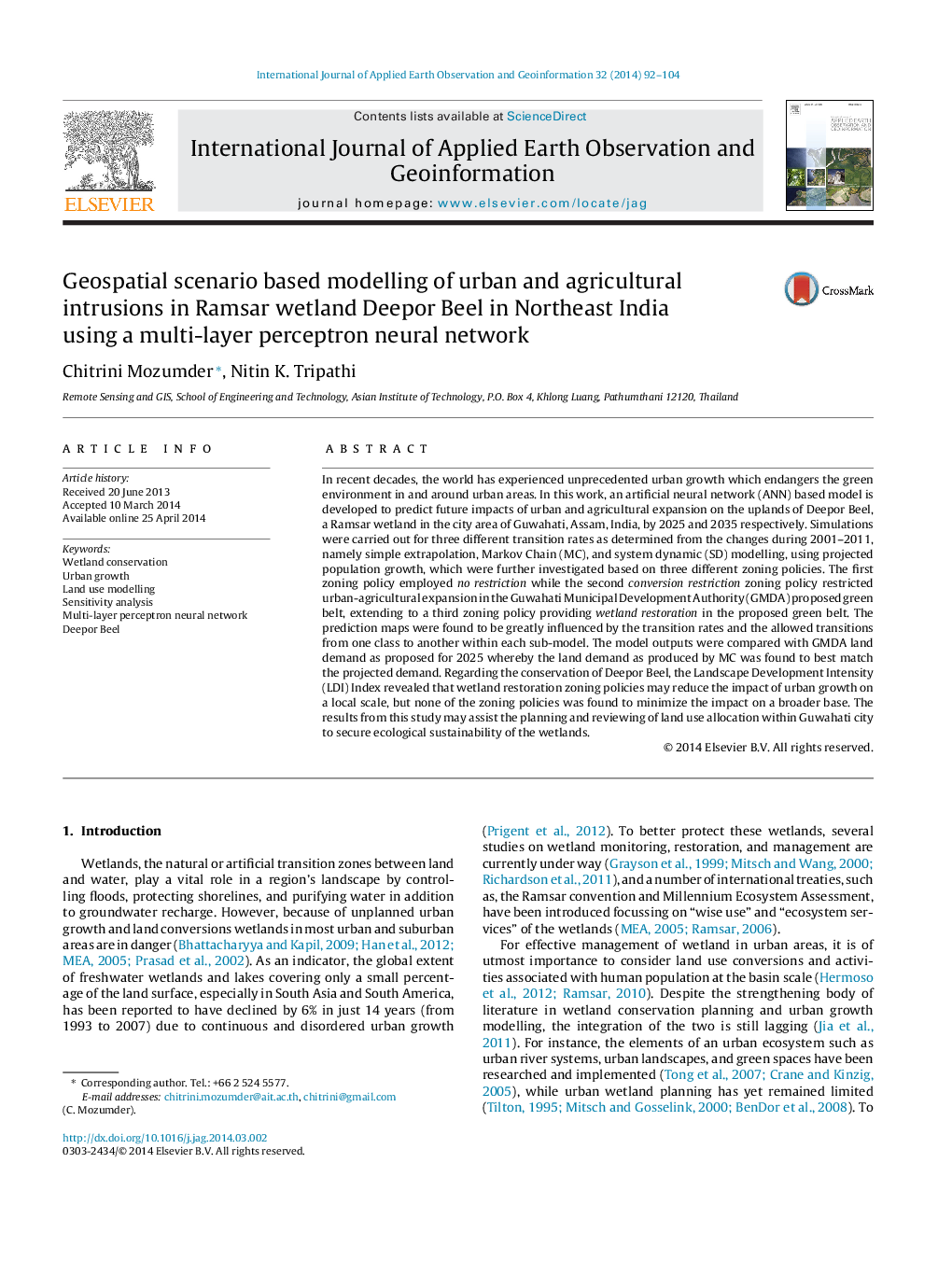| کد مقاله | کد نشریه | سال انتشار | مقاله انگلیسی | نسخه تمام متن |
|---|---|---|---|---|
| 4464770 | 1621827 | 2014 | 13 صفحه PDF | دانلود رایگان |

• We have explored how LU change will progress in the upland of an urban wetland for four scenarios.
• Change detection and driving factor analysis were carried in selection of land transitions to be projected for future.
• Land demands were calculated using extrapolation, Markov Chain and system dynamics, to explore plausible effect on wetland.
• Land demands were allocated using MLPNN based on three zoning policies considered for the wetland conservation.
• Scenario optimization was done by comparing the land demands with Government proposed land requirement and LDI.
In recent decades, the world has experienced unprecedented urban growth which endangers the green environment in and around urban areas. In this work, an artificial neural network (ANN) based model is developed to predict future impacts of urban and agricultural expansion on the uplands of Deepor Beel, a Ramsar wetland in the city area of Guwahati, Assam, India, by 2025 and 2035 respectively. Simulations were carried out for three different transition rates as determined from the changes during 2001–2011, namely simple extrapolation, Markov Chain (MC), and system dynamic (SD) modelling, using projected population growth, which were further investigated based on three different zoning policies. The first zoning policy employed no restriction while the second conversion restriction zoning policy restricted urban-agricultural expansion in the Guwahati Municipal Development Authority (GMDA) proposed green belt, extending to a third zoning policy providing wetland restoration in the proposed green belt. The prediction maps were found to be greatly influenced by the transition rates and the allowed transitions from one class to another within each sub-model. The model outputs were compared with GMDA land demand as proposed for 2025 whereby the land demand as produced by MC was found to best match the projected demand. Regarding the conservation of Deepor Beel, the Landscape Development Intensity (LDI) Index revealed that wetland restoration zoning policies may reduce the impact of urban growth on a local scale, but none of the zoning policies was found to minimize the impact on a broader base. The results from this study may assist the planning and reviewing of land use allocation within Guwahati city to secure ecological sustainability of the wetlands.
Journal: International Journal of Applied Earth Observation and Geoinformation - Volume 32, October 2014, Pages 92–104